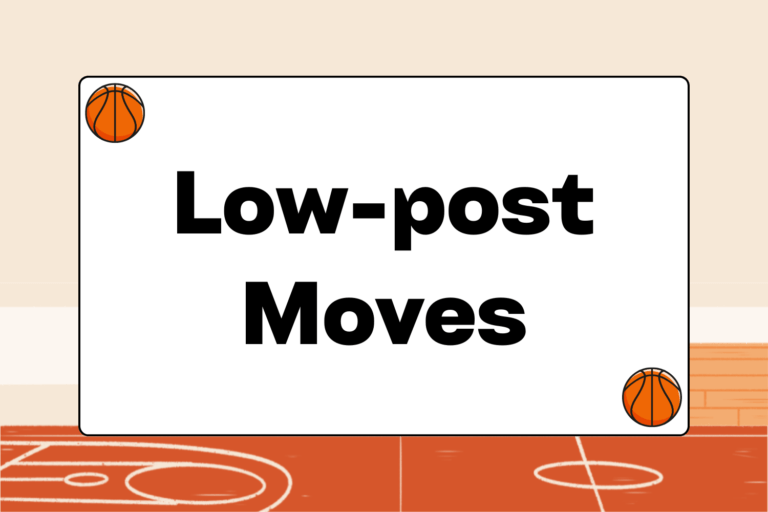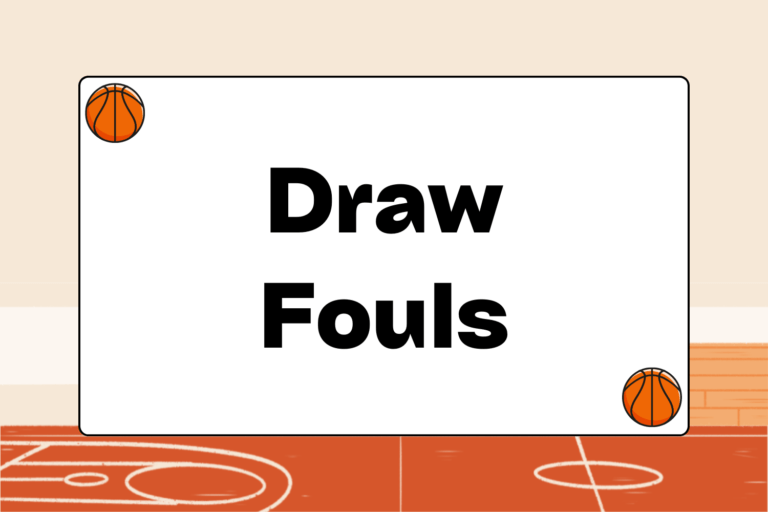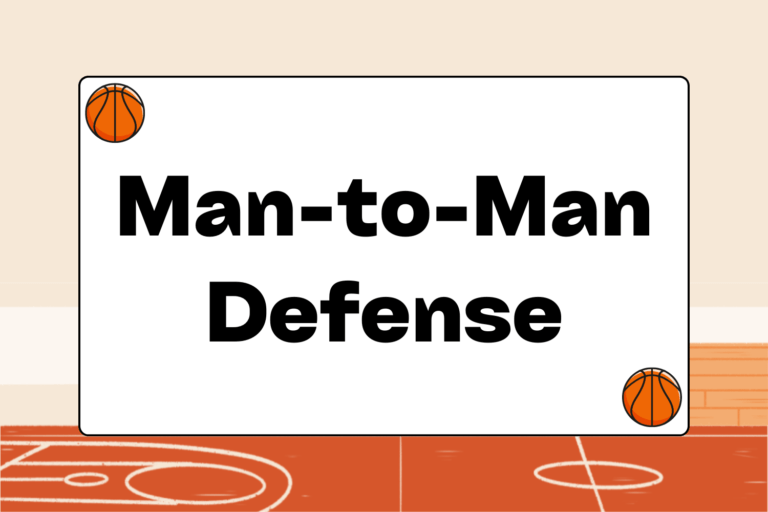The standard basketball court consists of a rectangular floor with baskets at both ends. Because basketball was originally conceived as an indoor sport, the traditional court surface is a hardwood floor (most often highly polished maple wood). However, as the popularity of the game expanded, so too did the variety of court surfaces.
Other popular basketball court surfaces include plastic (court composed of interlocking tiles), asphalt (outdoor), and blacktop (outdoor).
The actual dimensions of the court can vary depending on the age of the players and/or the level of competition. Each governing body has unique court dimension specifications. Here is a breakdown of the dimensions among the sport’s major organizations:
- NBA Court Dimensions: 94 feet x 50 feet
- WBNA Court Dimensions: 94 ft x 50 ft
- FIBA Court Dimensions: 91.86 ft x 49.21 ft
- NCAA Court Dimensions: 94 ft x 50 ft
- U.S. High School Court Dimensions: 84 ft x 50 ft
- U.S. Junior High School Court Dimesions: 74 ft x 42 ft
A Court Divided
The standard indoor basketball court is divided into various sections by markings drawn on the court. These lines are 2 inches thick and should be drawn in a contrasting color from the floor. A general description of the lines and their purpose can be found below:
Baseline/Endline
The baselines mark the end of the court’s boundaries. If a player steps on the endline while in possession of the ball it is a violation and the ball is awarded to the opposing team.
Sideline
These lines mark the side boundaries of the court. If a player steps on the sideline while in possession of the ball it is a violation and the ball is awarded to the opposing team.
Mid/Half Court Line
This line divides the court into two equal halves.
Foul Shot/Free Throw Line
When a player is fouled while attempting a try on goal (shot), he/she is rewarded with either one, two, or three unguarded opportunities to score (depending on where the shot was taken and if it was successful). The penalty shots are taken from the free-throw line, which is always marked 15 feet from the endline.
Three-Point Line
The three-point line – the arc-shaped line that separates the two-point scoring area from the three point area – was introduced in 1942. Any successful shots from behind the three-point line count as three points instead of two. Additionally, if a player is fouled while attempting a three-point shot and that shot is unsuccessful, he/she is awarded three free throw attempts.
The distance of the three-point line varies depending on the level of competition. Listed below are the current three-point distances and their corresponding leagues/levels:
- Junior High School Three-Point Line: 19 feet, 9 inches
- High School Three-Point Line: 19 feet, 9 inches
- NCAA Women’s Three-Point Line: 19 feet, 9 inches
- FIBA Three-Point Line: 20 feet, 6 inches
- WNBA Three-Point Line: 20 feet, 6 inches
- NCAA Men‘s Three-Point Line: 20 feet, 9 inches
- NBA Three-Point Line: 22 feet
The Key
The key refers to an area under the basket that can be anywhere from 16 (NBA) to 12 (college and high school) feet wide and 15 feet long. The key is used to prevent players from standing under the basket for long periods of time. The shape of the key is one of the most noticeable differences between an American court and an international court (American courts have a rectangular-shaped key while international/Olympic courts have a trapezoid-shaped key). However, on April 26, 2008, FIBA (the international governing body for basketball) announced that after October 1, 2010, international competition will adopt the rectangular key.
Jump Circle
A formal basketball game begins with a tip-off, and this is where that action takes place. A tip-off is when two opposing players meet in the jump circle – also called the center circle – and wait for the referee to toss the ball into the air. Once the ball is tossed, both players jump into the air in an attempt to tip the ball to one of their teammates.
Restricted Area Arc
The restricted area arc is found only on NBA courts. According to NBA rules, if any part of a defender’s body is touching the arc, that player is not eligible to draw an offensive foul.
Equipment
The equipment requirements for basketball are simple: Basic play requires only a ball and an elevated goal/hoop. Formal competition, however, is much more demanding. The regulations concerning legal ball size and composition, hoop height and construction, along with other basketball equipment, can be found below.
The Ball
Basketballs currently come in four distinct sizes; the size of the ball depends largely on the level of competition. Here is a breakdown of the different sizes:
- Circumference 22 to 22.5 inches, weight 10 to 11 ounces: Recommended for small children (age 5-8).
- Circumference 27.25 to 27.75 inches, weight 16.6 to 18 ounces: Recommended for boys and girls under 12 years old (junior league).
- Circumference 28.5 to 29 inches, weight 20 ounces: Recommended for boys ages 12 through 14, and girls age 12 and up. This is the official ball at the girls’ high school, women’s college, and women’s professional ranks.
- Circumference 29.5 to 30 inches, weight 22 ounces: Recommended for boys age 15 and up. This is the official ball at the boys’ high school, men’s college, and men’s professional ranks.
Though the size and weight of the ball may vary according the level of competition, the rules regarding the color and composition of the ball are uniformed.
The basketball must be spherical and shall be an approved shade of orange. In addition, the ball shall have a deeply pebbled leather or composite cover.
The Basket/Ring
The basket is comprised of an orange metal ring (18 inches in diameter); a mesh net (15 to 18 inches in length); and a backboard. The ring must be elevated 10 ft. above the playing surface and should be securely fastened to the backboard.
The Backboard
The backboard must be composed of a transparent material and can measure either 6 feet horizontally and 3.5 feet vertically, or 6 feet horizontally and 4 feet vertically. The backboard is always positioned 4 feet from each end line and in the center of the court.
Clock/Score Board
A game clock that shows the amount of time left in each period is required for all formal competitions. The highest levels demand a timing device that displays tenths of seconds, but most lower-level competitions don’t have such stringent requirements.
Shot Clock
These clocks are required at the collegiate level, in most professional leagues, and all high-level international competitions. A shot clock is a device that keeps track of the allotted amount of time given to each team per possession (the specific amount depends on the level). In men’s college basketball, for example, each team is given 35 seconds per possession.
Possession Indicator
The possession indicator keeps track of alternating possessions.
Basketball is Basketball
Remember, the dimensions listed above pertain only to formal basketball competition. Many outdoor or personally owned courts may not have the same regulations, but they are still adequate facilities to which these rules can be applied. If you do abide by this guide, it shouldn’t take any of the fun out of a simple game that has simple equipment requirements.





